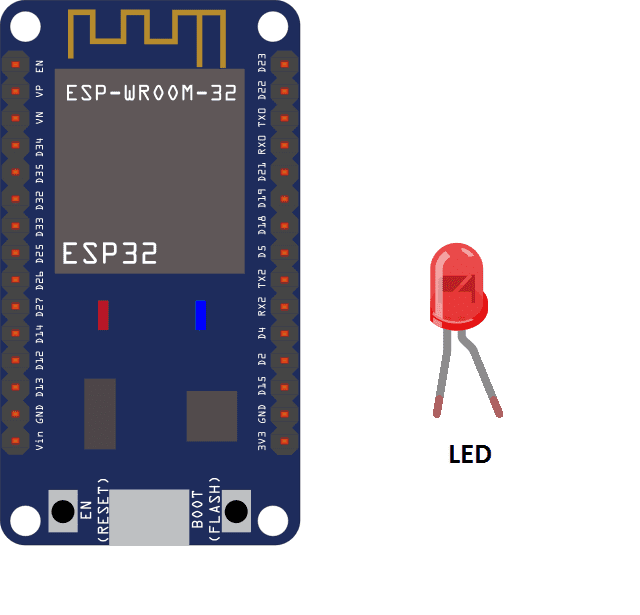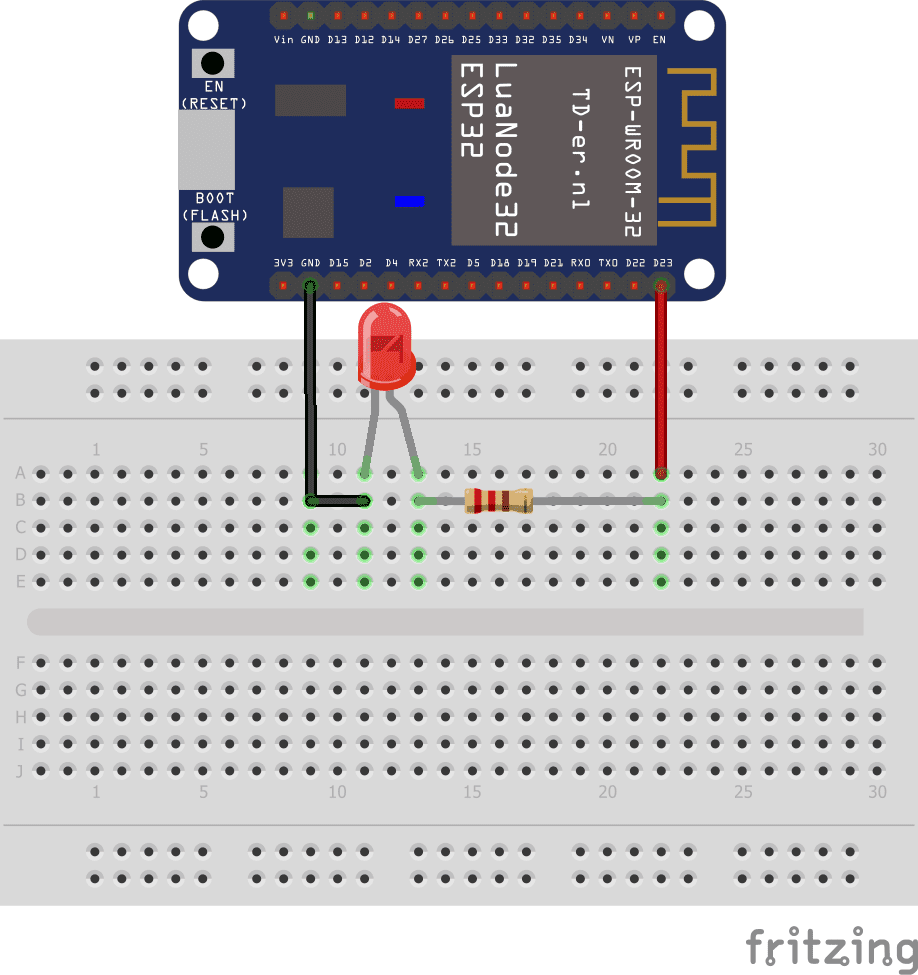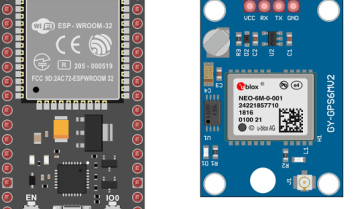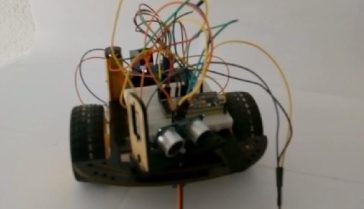

The ESP32 is a microcontroller with built-in Wi-Fi and Bluetooth capabilities. It can be programmed using the Arduino IDE or other programming languages such as MicroPython or Espressif’s ESP-IDF.
An LED (light-emitting diode) is a semiconductor device that emits light when an electric current is passed through it. They are commonly used as indicator lights in electronic devices.
To control an LED using an ESP32, you would need to connect the LED‘s anode (positive) terminal to a digital output pin on the ESP32, and the cathode (negative) terminal to a ground pin on the ESP32. Then, you would use the ESP32‘s programming language to set the digital output pin to a high or low state, which will turn the LED on or off.
Purpose of this tutorial:
To make an LED flash using an ESP32, you can use a digital output pin to control the state of the LED, and use the delay function to create a pause between the on and off state of the LED.
The objective of this tutorial is to flash an LED by the ESP32 board: to turn the LED on and off alternately at 1 second intervals.
Necessary components
ESP32

The ESP32 is a low-cost, low-power microcontroller with built-in Wi-Fi and Bluetooth capabilities. It is a popular choice for IoT projects and is commonly used for a variety of applications such as home automation, wireless control, and sensor data logging. The ESP32 features a dual-core processor, a rich set of peripherals, and support for a wide range of protocols. It can be programmed using the Arduino IDE and various other programming languages such as C, C++, and MicroPython.
Additionally, the ESP32 has a wide range of features including:
- A high-performance processor with a clock speed of up to 240 MHz
- Support for various types of wireless connectivity such as Wi-Fi, Bluetooth, and Bluetooth Low Energy (BLE)
- Multiple communication interfaces such as I2C, SPI, UART, and I2S
- A large number of GPIO pins to connect to external devices and sensors
- A built-in security module for secure communication
The ESP32 is often used in projects where a low-cost, low-power device with Wi-Fi and Bluetooth capabilities is needed, and it is commonly used with other sensors and devices to build IoT projects, home automation systems, wireless control systems, and data logging systems.
LED
![]()
An LED (Light Emitting Diode) is a semiconductor device that emits light when an electric current is passed through it. LEDs are widely used in a variety of applications because they are energy-efficient, have a long lifespan, and are available in a wide range of colors.
LEDs can be found in many electronic devices such as televisions, smartphones, computers, and traffic lights. They are also used in automotive lighting, general illumination, and as indicator lights.
Resistor of 220Ω
![]()
A resistor is an electronic component that resists the flow of electrical current. It is used to control the amount of current flowing in a circuit and to adjust the voltage levels in a circuit. Resistors are made of a variety of materials, such as carbon, metal, and metal oxide, and come in a wide range of shapes, sizes, and types.
Connecting wires

Connecting wires refers to the process of physically connecting wires or cables to a device or circuit in order to establish an electrical connection. This can be done by using various connectors such as plugs, sockets, or terminal blocks. The wires are typically color-coded to indicate their function, such as red for power, black for ground, and yellow for signals.
Test plate

A test plate is a type of circuit board that is used to test electronic components. It typically consists of a flat board made of a non-conductive material, such as plastic or fiberglass, with a number of holes or pads that are used to connect electronic components. The test plate allows you to connect electronic components and test them easily.
Mounting
As for the assembly, it is easy to connect LEDs to the ESP32 board:
-
Connect pin D23 of the ESP32 card to the resistor leg
-
Then, we connect the second leg of the resistor to the anode (+ terminal) of the LED
-
Finally we connect the cathode (terminal -) of LED to the GND of the ESP32 board

MicroPython program
|
1 2 3 4 5 6 7 8 9 |
import time from machine import Pin led=Pin(23,Pin.OUT) #Sets ESP32 board pin D23 to output mode while True: led.value(1) #Light up LED time.sleep(1) #Wait 1s led.value(0) #Turn off LED time.sleep(1) # Wait 1s |



















